#vincent paronnaud
Text
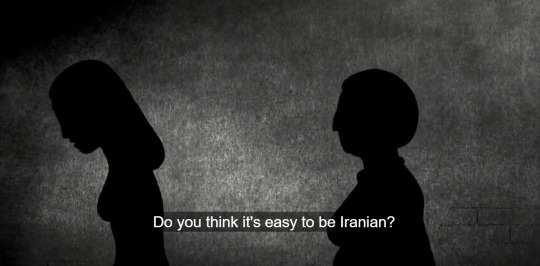


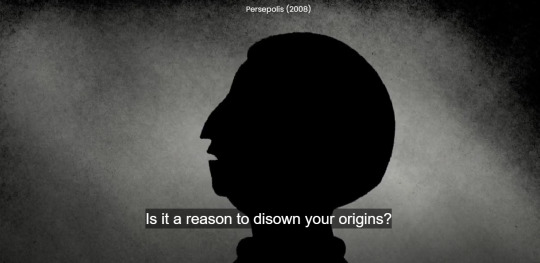
60 notes
·
View notes
Text
Best animated movie!
Choose your favorite movie: Marjane Satrapi's story of coming of age under a repressive regime, or the best found family story ever.
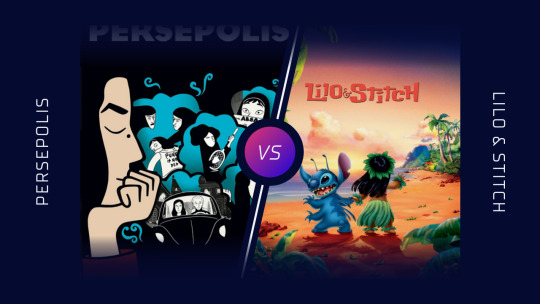
Vote on the other polls of Round 1
#Persepolis#Lilo & Stitch#lilo and stitch#Vincent Paronnaud#Marjane Satrapi#Chris Sanders#Dean DeBlois#Disney#polls#my polls#best animated movie#animation#animated movies#y
7 notes
·
View notes
Text
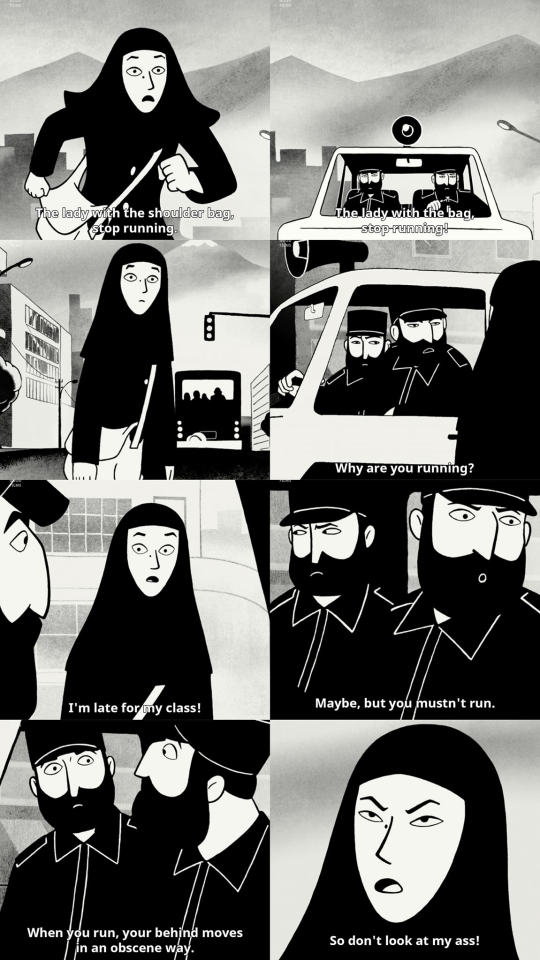
2007: Persepolis
13 notes
·
View notes
Text
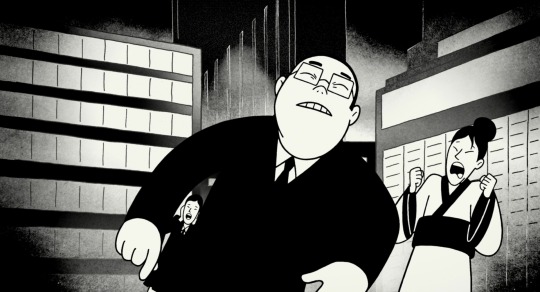
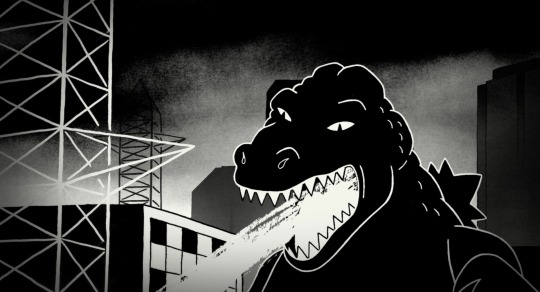
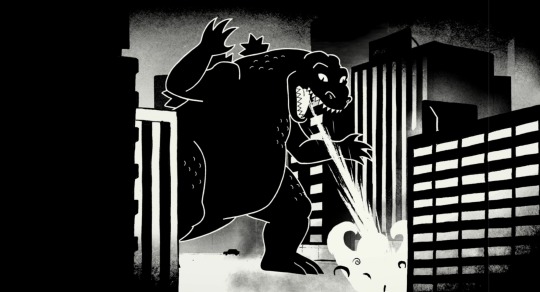
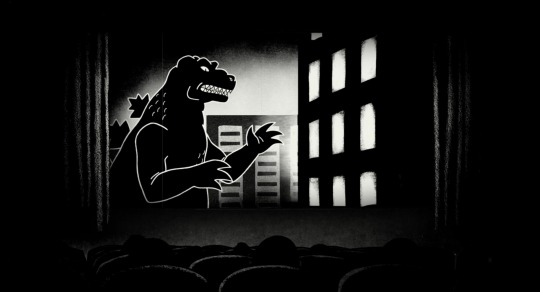
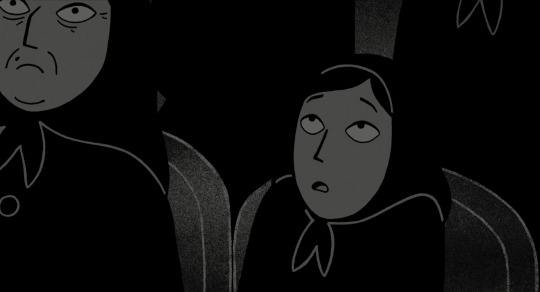


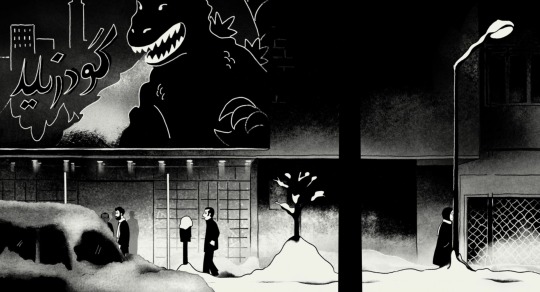
From Filmsinfilms.com
Ishirô Honda’s Godzilla (1954) in Vincent Paronnaud/Marjane Satrapi’s Persepolis (2007).
#film#pel·lícula#movie#película#persepolis#marjane satrapi#vincent paronnaud#comic#comic books#films based on comics#filmsinfilms#movie theater#movie theater in films#People in movie theaters#movies in movies#movies in films#people in movie theaters
0 notes
Text
Hunted is an interesting beast. At first blush it was powerful, but on closer inspection...the power dynamic at work leaves something to be desired.
#hunted#nightstream#film festivals#horror#horror films#movie review#film review#fairy tales#fairy tale adaptations#revenge films#little red riding hood#vincent paronnaud#lea pernollet#joachim phillippe#lucie debay
0 notes
Photo
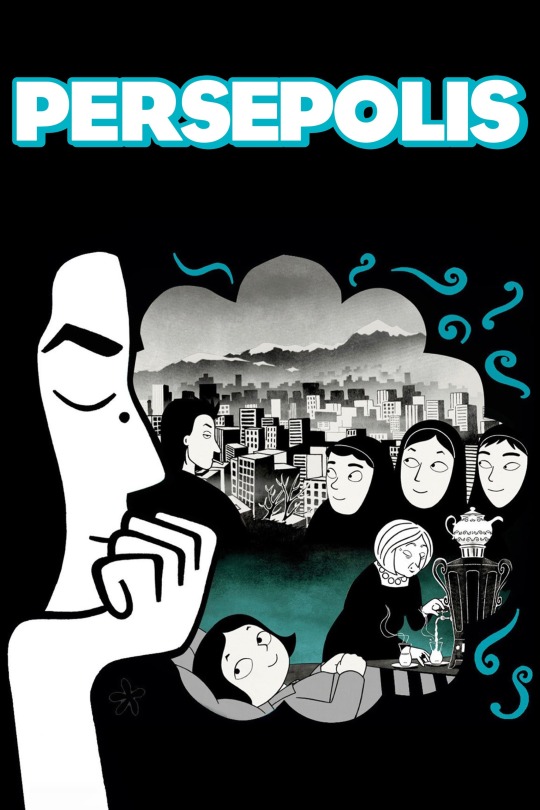
Découverte de Persepolis (2007)
#persepolis#marjane satrapi#vincent paronnaud#chiara mastroianni#catherine deneuve#danielle darrieux#cinéma#animation
0 notes
Text




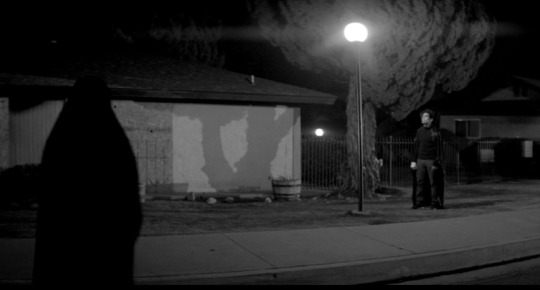

a collection of modern black & white films
✧ ‘Persepolis’ (2007) dir. Vincent Paronnaud, Marjane Satrapi
✧ ‘The Lighthouse’ (2019) dir. Robert Eggers
✧ ‘Cold War’ (2018) dir. Paweł Pawlikowski
✧ ‘The Tragedy of Macbeth’ (2021) dir. Joel Coen
✧ ‘A Girl Walks Home Alone at Night’ (2014) dir. Ana Lily Amirpour
✧ ‘Frances Ha’ (2012) dir. Noah Baumbach
#films#black and white#black & white#movies#film#film frames#cinema#film stills#cinematography#persepolis#cinephile#screencaps#film lovers#film is not dead#film tag#cinephiles#film lover#film community
177 notes
·
View notes
Video
Persepolis
Directors: Marjane Satrapi & Vincent Paronnaud
France/Iran, 2007
#Persepolis#Marjane Satrapi#Animation#Iran#Iranian Revolution#Islam#Women#War#Black and White#Fundamentalism#Iran–Iraq War#Muslim
383 notes
·
View notes
Text
Viewing Response 1: Dispersed Peoples

The autocomic epic Persepolis frames Iran’s changing cultural landscape through the life of author Marjane Satrapi. Reimagined as an animated film, the notion of perspective is emboldened by its cinematic landscape. In one scene, Satrapi’s uncle Anoosh recounts a harrowing tale of escape in the midst of political upheaval. At this point in the story, Satrapi is still a child. As such, the sequence has all the whimsy of a children’s folktale. Scenery glides in and out like pop-up book displays while vindictive political militia has the exaggerated mannerisms of storybook villains. As is the case throughout the film, the animation style seems to be sprung from the vantage point of our protagonist. Through a blend of comic book style illustration and filmic animation Satrapi (along with co-director Vincent Paronnaud) is able to achieve what author Stacey Weber-Fève refers to as “a new understanding of affective memory and storytelling.” By externalizing Satrapi’s imaginative world, we come to understand how war is seen through the eyes of a child. Persepolis is centered on the experience of individuals, imbuing history with humanity and heart.
@theuncannyprofessoro

5 notes
·
View notes
Text

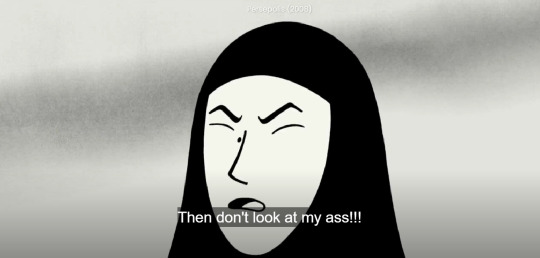
31 notes
·
View notes
Note
Hi user nanaphat! Hope you’re doing well!
Here’s a list of animated films that you might like :) (Nothing can compete with The Grave of the Fireflies though)
- The Summit of the Gods dir. Patrick Imbert
- Tales of Earthsea dir. Goro Miyazaki
- The Swallows of Kabul dir. by Zabou Breitman and Eléa Gobé Mévellec
- Persepolis dir. Vincent Paronnaud and Marjane Satrapi
- Flee dir. Jonas Poher Rasmussen
- Colorful dir. Keiichi Hara
My favourite from this list is The Summit of the Gods. I adore Jiro Taniguchi’s work and the film beautifully adapted his art style. Nothing can top the sheer beauty of his words and drawings and yet I feel like this film succeeded in encapsulating the essence of his work.
thank you so much for this high-quality list omg! i will slowly work through all of them and who knows!!! i might liveblog if i remember to!
the funny thing is that i actually read the original manga version of the summit of the gods and i really liked it. (our tastes match yay!!) so i think i'll put that at the bottom of my watch list for now, since i still remember how that plot went. but i have no doubt the film was the perfect adaptation for it hehe
#answered#Anonymous#speaking of taniguchi’s works! i also read two other manga by him and they were uhh#aruku hito and chichi no koyomi#chichi koyomi i loved! and that was the perfect type of seinen i always look for. but aruku hito not so much#but in general i have a lot of respect for his style and unique way of storytelling!! ^.^ definitely keen on reading more of his other work#didn't expect someone to mention him on the drama side of tumblr hehe#to keep
3 notes
·
View notes
Text
Persepolis Viewing Response 1
Marjane Satrapi’s film, based on her novel, “Persepolis”, is a semi-autobiographical retelling of her life during and after the Iranian revolution. It follows her as she grows up in Iran, eventually moves to Austria for school, comes back for her family, and ends with her moving to Paris indefinitely. The film explores and links the ideas of culture, belonging, and migration through Marjane’s story. “Persepolis” is unconventional as it is entirely animated, the majority of which is in black and white, and as a result it exists in the minority of other films telling similar stories. In Stacey Weber Feve’s article, “Framing the ‘Minor’ in Marjane Satrapi and Vincent Paronnaud’s Persepolis”, she explores the concept of the minor in Persepolis, emphasizing how certain framing and imagery choices replicate migratory-like movements that add to the East-West dichotomy in the film. Marjane’s feelings of never truly being home in both Iran and Europe are emphasized by invisible and open frame shots, the angles at which characters are filmed, and the “motif of cultural transference” with the jasmine flower.
2 notes
·
View notes
Text
"Abba is for Wimps": Persepolis and the Major/Minor Discourse
"Persepolis" manages to traverse the line between endearing and intelligent humor and political discourse in a way that would not be possible without the film's intrepid protagonist, Marjane. Marjane loves music and purchases contraband tapes and vinyls of the Bee Gees and Iron Maiden, using Western music as escapism from the fundamentalist regime crumbling around her. In a particular scene, she excitedly shows a friend her Bee Gees vinyl, then sees a classmate's ABBA vinyl and tells her "Abba is for wimps." The exchange is characterized by Marjane's incisive wit and exemplifies the film's genuine moments of humor and rich character-building. Moments after the exchange, an alarm goes off, panic sets in, and the students evacuate their classroom as bombs fall around them. Stacey Weber-Fève’s “Framing the ‘Minor" asserts that Marjane Satrapi and Vincent Paronnaud's work possesses a "sometimes startling, sometimes reassuring juxtaposition of the ‘'major' and the 'minor'" (324). This scene is an expression of the minor, of the kind of self-righteousness teenagers fumbling for self-expression project onto one another, quickly interrupted by the major--the political chaos persists, but so does Marji's spirit. The two, the major and minor, refuse to cease in the film despite the other's sharp contrast, and they work together to scaffold Marji's identity formation and fuel her inner conflict.
@theuncannyprofessoro
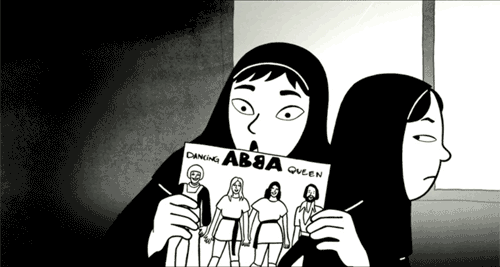
2 notes
·
View notes
Text
Persepolis Viewing Response
In the film "Persepolis", directed by Marjane Satrapi and Vincent Paronnaud, lighting and visual effects are incorporated to convey emotions to the viewer. In the scene where Marjane’s parents are sending her off to Vienna, her mother faints as she is walking away and Marjane turns around to see her mother collapsed in her father's arms. Their figures are displayed as silhouettes, in which case the viewer can see what is happening but it is not as explicit. The expression on Marjane’s face shifts from a smile to a look of fear as she sees her mother being carried away. This allows the viewer to understand the screen direction of the shot, as well as what Marjane’s reaction is to what she is seeing. The shot then fades out from black and white to color when depicting the present-day Marjane sitting at the airport. This technique makes the black and white shots appear as a memory and the shots in color feel more real and authentic. The shot at the end of the film parallels this shot, where Marjane is saying goodbye to and departing from her parents and grandmother for the last time.

2 notes
·
View notes
Text
movie recommendations nobody wants part 1 :
There Will Be Blood (2007) Dir: Paul Thomas Anderson. Description: A character study into a man consumed by greed in the early 20th century California oil boom
Inside Llewyn Davis (2013) Dir: Joel Coen + Ethan Coen. Description: A folk singer battles depression and poverty over the course of about a week in his life
City of God (2002) Dir: Fernando Meirelles + Katia Lund. Description: A coming of age tale set in the backdrop of one of the most dangerous and violent slums in Rio de Janeiro
Porco Rosso (1992) Dir: Hayao Miyazaki. Description: A pilot is turned into a pig and has turned to bounty hunting during the early days of aviation
Hot Fuzz (2007) Dir: Edgar Wright. Description: Two cops in a small English village must solve a series of seemingly accidental and bizarre deaths
Persepolis (2007) Dir: Vincent Paronnaud + Marjane Satrapi. Description: The real life story of Marjane Satrapi's childhood and family during the Iranian revolution and her schooling in Europe
Song of the Sea (2014) Dir: Tomm Moore. Description: A modern Irish folktale about a young boy, his sister, and his dog's quest to heal the grief of their father
The Worst Person in The World (2021) Dir: Joachim Trier. Description: a few chapters in the life of Julie a young woman whos is on a path to discover who she is
Good Time (2017) Dir: Josh Safdie + Benny Safdie. Description: after a bank heist gone wrong a new york con artist must find a way to bail out his mentally handicapped brother from jail
The Lighthouse (2019) Dir: Robert Eggers. Description: Two men are trapped on a lighthouse isolated from the rest of the world during the mid 1800s
Once Upon a Time in Anatolia (2011) Dir: Nuri Bilge Ceylan. Description: a deep dive into morality and life philosophy told by several cops, a doctor, a prosecutor, and two murders
Kill Bill Vol.1 (2003) Dir: Quentin Tarantino. Description: a woman awakes from a comma to partake in a violent and gory revenge quest against those who wronged her
#movies#film#movie rec list#there will be blood#paul thomas anderson#inside llewyn davis#coen brothers#city of god#porco rosso#hayao miyazaki#hot fuzz#edgar wright#persepolis#song of the sea#the worst person in the world#good time movie#the lighthouse#rob pattinson#the safdie brothers#once upon a time in anatolia#kill bill#kino#bobathansexhaver
8 notes
·
View notes
Text
Marjane Satrapi
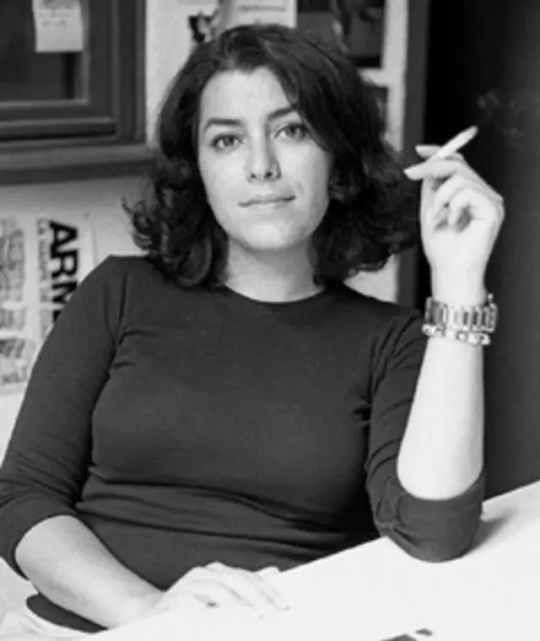
Marjane Satrapi, fumettista, regista, sceneggiatrice e illustratrice, con il suo lavoro illustrato ha dato voce all’Iran contemporaneo.
È l’autrice del famosissimo Persepolis, il primo fumetto autobiografico sulla storia iraniana poi diventato un film, nel quale descrive la sua infanzia in patria e la sua adolescenza in Europa. La protagonista è una bambina, i suoi giochi, la scuola e la scoperta del rock, che si svolgono in mezzo all’ascesa del fondamentalismo religioso in Medio Oriente.
Una riflessione sui comportamenti legati alla superficialità e al pregiudizio che portano a identificare un paese, un’intera civiltà, con alcuni estremi, drammatici aspetti della sua storia recente.
Scritta con l’intento di “ribattere ai pregiudizi sul mio Paese senza essere interrotta” è la saga di una famiglia iraniana a Teheran tra il 1960 e il 1990.
Sua è anche l’immagine simbolo della lotta delle donne iraniane contro il regime: Donna, Vita, Libertà.
Nata a Rasht, il 22 novembre 1969, è stata educata secondo principi progressisti da genitori illuminati, che, per evitarle il clima oppressivo ed estremista del regime di Khomeini, l’hanno fatta studiare prima al Liceo Francese di Teheran e poi, ancora giovanissima, a Vienna, dove ha dovuto fare i conti con pregiudizio e razzismo nei suoi confronti.
Nel 1988, alla fine della guerra con l’Iraq, è tornata a casa e ha frequentato la Facoltà delle Belle Arti. Incapace di reggere il clima di censura e privazione delle libertà, terminati gli studi, si è trasferita prima a Strasburgo e poi a Parigi dove, frequentando l’Atelier des Vosges, gruppo di disegnatori e disegnatrici che hanno dato vita al movimento d’avanguardia della Nouvelle bande dessinée.
Nel 2001 è nato il suo capolavoro Persepolis che ha riscosso subito un grande successo grazie allo stile semplice e immediato del disegno, volutamente naif e talvolta elementare, sempre efficace.
Il libro ha venduto oltre tre milioni di copie in tutto il mondo ed è stato tradotto in oltre venti lingue. La storia ha assunto un carattere universale grazie all’astrazione conferita dal segno in bianco e nero e alla semplificazione delle figure. La forma del romanzo grafico è riuscita magistralmente a sintetizzare specificità culturali entrando in comunicazione con culture e età diverse.
Nel 2007 ne è stato tratto l’omonimo film d’animazione candidato al Premio Oscar nel 2008. Scritto e diretto da Marjane Satrapi e Vincent Paronnaud è stato realizzato interamente a mano, secondo le tecniche più tradizionali, per ricreare il segno del fumetto.
Dopo Persepolis ha pubblicato Taglia e cuci, Pollo alle Prugne con cui ha vinto l’Oscar del fumetto al festival internazionale di Angoulême, Il sospiro, favole persiane, Il velo di Maia. Marjane Satrapi o dell’ironia dell’Iran.
La trasposizione filmica di Pollo alle prugne, in live action, del 2011, è stata presentata in anteprima alla 68ª Mostra internazionale d’arte cinematografica di Venezia. Ha anche diretto The Voices (2014) e Radioactive (2019).
La sua ultima fatica letteraria è stata Donna, vita, libertà, in cui ha riunito esperti di storia, politica e comunicazione e i più grandi talenti del mondo del fumetto per raccontare l’evento che ha segnato la storia contemporanea: l’uccisione di Mahsa Amini dovuta al pestaggio della polizia morale perché non indossava “correttamente” il velo. La morte della giovane ha scatenato in tutto l’Iran un’ondata di protesta che ha dato vita a un movimento femminista senza precedenti.
Marjane Satrapi vive e lavora a Parigi, collabora con numerose riviste e cura una colonna illustrata per il The New York Times.
Nel 2024 è stata insignita del prestigioso Premio Principessa delle Asturie 2024 per la comunicazioni e gli studi umanistici per “la sua voce essenziale nella difesa dei diritti umani e della libertà“.
Nella motivazione, la giuria ha evidenziato che “è un simbolo dell’impegno civico guidato dalle donne. Per il suo coraggio e la sua produzione artistica è considerata una delle persone più influenti nel dialogo fra culture e generazioni“.
Nel ringraziare per il riconoscimento, Marjane Satrapi ha affermato: “approfitto l’opportunità per celebrare la feroce lotta del mio popolo per i diritti umani e la libertà. Oggi si onorano tutti i giovani che hanno perso la vita e a quanti continuano nella battaglia per la libertà in Iran“. E ha dedicato il premio a Toomaj Salhebi, artista di rap, condannato a morte per il suo canto alla libertà.
0 notes